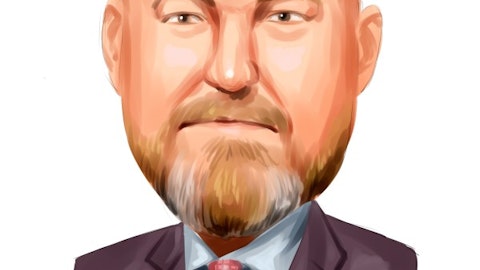When billionaire Julian Robertson started Tiger Management in 1980, he probably didn’t envision creating a whole dynasty of hedge funds that would be renowned and closely followed by the investing community. But that’s exactly what happened. As Robertson himself groomed a number of hedge fund managers, including Chase Coleman, Lee Ainslie, Andreas Halvorsen, and Stephen Mandel, and helped to launch over 30 other hedge funds (known as “Tiger Seeds”), his former protégés, commonly known as “Tiger Cubs” helped launch the new generation of hedge fund managers. One of these new managers, who have been named “Tiger Grand Cubs”, is David Greenspan, the manager of Slate Path Capital.
David Greenspan got his undegraduate degree in business administration from George Mason University in 1993 and went to work as a CPA and consultant for Price Waterhouse (which later became PricewaterhouseCoopers). In 2000 he obtained an MBA from Columbia Business School and the same year joined Blue Ridge Capital, a hedge fund led by John Griffin, the former president of Robertson’s Tiger Management, where he became a partner and managing director. In April 2012, Greenspan launched his own hedge fund together with fellow Blue Ridge alumni, analysts Stephen Cook and Ethan Binder, and junior analyst Jamie McNab. The team was also joined by John Metzner, former president of Plural Investments.
David Greenspan is currently the President and Chief Executive Officer of Slate Path Capital. His two members of his founding team, Stephen Cook and Ethan Binder are partners, while Jamie McNab is an analyst at the fund. John Metzner, who joined Slate Path at its inception in April 2012, is the fund’s Chief Operating Officer. Later in 2012, Slate Path also hired Thomas Hansen, the former COO of Plural Investments, as the Chief Financial Officer, while in December 2013, the team was joined by James Feeney, the former Chief Compliance Officer of Polygon Global Partners, who became the CCO of Slate Path.

Lightspring/Shutterstock.com
With support from their former boss, John Griffin, Greenspan and his new partners reportedly obtained $1.0 billion in seed capital. According to a recent ADV form, Slate Path Capital has around $5.03 billion in regulatory assets under management. Slate Path consists of two main funds, the Flagship Master Fund and the SPF Master Fund. Each fund employs a long/short approach and focus on equities, but also have non-equity positions.
Suggested Read: Do Julian Robertson’s Tiger Cubs Have Alpha?
The long/short approach that Slate Path Capital employs has generated losses in the hedge fund industry over the last several years and some pundits even suggested that the days of the most popular investing strategy are over, as it no longer allows hedge funds to safely beat the market. However, Slate Path’s stock picking skills have allowed it to beat the market, at least according to our calculations. We measure a fund’s performance by calculating the weighted average returns of its long positions in companies worth over $1.0 billion, as disclosed in the quarterly 13F filings. According to our estimates, Slate Path’s picks returned 10.8% in the first six months of 2017, beating the S&P 500 by more than two percentage points. Over the 12-month period ended June 30, Slate Path’s picks have gained 40.4%, boosted by a 16.1% return generated during the third quarter of 2016.
In its latest 13F filing, Slate Path revealed an equity portfolio worth $2.63 billion as of the end of June. The two largest positions are in ‘Call’ options underlying shares of the PowerShares QQQ Trust, Series 1 (ETF) (NASDAQ:QQQ), which seeks to replicate the NASDAQ 100 Index, and the SPDR S&P 500 ETF Trust (NYSEARCA:SPY).
On the following pages, we are going to take a closer look at Slate Path Capital’s top five stock picks.




